Time Patrol Read online
This is a work of fiction. Names, characters, organizations, places, events, and incidents are either products of the author’s imagination or are used fictitiously.
Text copyright © 2015 by Bob Mayer
All rights reserved.
No part of this book may be reproduced, or stored in a retrieval system, or transmitted in any form or by any means, electronic, mechanical, photocopying, recording, or otherwise, without express written permission of the publisher.
Published by 47North, Seattle
www.apub.com
Amazon, the Amazon logo, and 47North are trademarks of Amazon.com, Inc., or its affiliates.
ISBN-13: 9781477821879
ISBN-10: 1477821872
Cover design by Jason Blackburn
Library of Congress Control Number: 2014950613
To all the Special Operators who have paid the ultimate price. Particularly those who died on 28 June 2005 during Operation Red Wings.
Please donate to the Special Operations Warrior Foundation www.specialops.org, which helps fund education for the children of these departed comrades in arms.
Or donate to www.warrior2warrior.org, which helps Special Operations troops deal with traumatic brain injury (TBI) and post-traumatic stress disorder (PTSD), founded by a widow from my former unit: 10th Special Forces Group (Airborne).
Thank you.
START READING
WHEN IT CHANGED
CHAPTER 1
CHAPTER 2
CHAPTER 3
CHAPTER 4
CHAPTER 5
THE SPACE BETWEEN
CHAPTER 6
CHAPTER 7
CHAPTER 8
THE SPACE BETWEEN
CHAPTER 9
CHAPTER 10
THE SPACE BETWEEN
CHAPTER 11
CHAPTER 12
THE SPACE BETWEEN
CHAPTER 13
THE SPACE BETWEEN
CHAPTER 14
THE SPACE BETWEEN
IN THE MOMENT OF CHOICES
IN THE TIME BETWEEN: 28 JUNE 2005
WHEN IT CHANGED BACK
ABOUT THE AUTHOR
MORE WORLDS TO EXPLORE!
ALSO BY BOB MAYER
The long unmeasured pulse of time moves everything. There is nothing hidden that it cannot bring to light, nothing known that may not become unknown. Nothing is impossible.
—Sophocles
Stuff happens; sometimes really bad stuff.
A Nada Yada
* * *
When it changed, Roland, stone-cold killer, otherwise nice guy, and weapons man for the Nightstalkers, had the stock of a sniper rifle tucked tight in to his shoulder with a righteous target approaching, and that made him happy. Neeley, a usually stone-cold killer from the Cellar, was in overwatch, with her own sniper rifle, and she was acting wonky. That made Roland unhappy since he liked her, and like for Roland was the equivalent of rabid devotion in a well-trained attack dog. However, it all balanced out and mattered little since he was in combat mode, and feelings were of no consequence to him in that mode. There was only the mission.
Roland was a man who could live and flourish in the here and now.
That’s a rare, and valuable, trait.
It was going to get a lot more valuable.
It changed for Scout—now eighteen years old and almost two years past her first encounter, run-in, kerfuffle, whatever, involving the Nightstalkers—with a whiff of bacon. She’d only smelled real bacon outside the confines of her home; never inside. Inside it was always fakon, vacon, or one of the other imposters. If you gotta fake it, Scout had always reasoned ever since she was old enough to reason, which had been pretty dang young, then isn’t imitation the sincerest form of flattery, and one should go with the original? Her rail-thin mother, who counted each calorie as if it were mortal a sin, did not see things that way.
Thus the mystery of the odor permeating the house.
For a moment Scout lay in bed wondering if perhaps it was wafting in from the old house next door, the one with the barn where she stabled her horse, Comanche. Out of the old stone chimney. People with a barn and a stone chimney had to eat bacon.
But in this relatively new house with its fake gas fireplace, with Scout’s mother ruling the kitchen, with the aroma of honest-to-goodness real bacon filling the air, Scout questioned reality.
That’s a good trait, one the Nightstalkers had found valuable in the past and would need in the future.
If there was to be one.
It changed for Nada, team sergeant of the Nightstalkers, the most experienced member of the group, a man who’d stared death in the eye and French kissed the Grim Reaper (figuratively, although stranger things have happened on Nightstalker missions), with irritating voices singing “It’s a Small World,” the whiny tune echoing in his head as his niece Zoey tried to spin their teacup faster and faster.
Definitely down a rabbit hole of dubious merit.
They’d gone from hell to a deeper hell, was Nada’s estimation, walking from It’s a Small World to The Mad Tea Party. He was not the type of person Disneyland had been designed for, and he was a bit disappointed Zoey was attacking each new ride with such zest. Of course she was just a kid, but still. He expected better of someone who shared his bloodline.
As they spun about, Nada wondered, how small was the world really?
And why did Disneyland bother him so much and on a deeper level than irritating songs?
Little did he know, he was about to find out the answers to both.
And the answers were not good.
It changed at Area 51 deep inside the sprawling complex set in the middle of Nowhere, Nevada, because many problems on the cutting edge of science, physics, and the weird and the wonderful started at Area 51. But this time it was not in the labs where scientists tested the outer boundaries of man’s knowledge, occasionally traveling from genius to stupid at lightspeed (literally sometimes) and requiring the Nightstalkers to clean up their messes. This time it was in the repository of the results of all those tests and so much more: the Archives. If the Ark of the Covenant was indeed found by some Indiana-Jones-type character, it would have been stored here, and it would have fit right in with many of the other weird and wonderful and frightening items gathered from around the world and hidden away deep under the sort-of-secret-but-definitely-most-secure facility in the continental United States.
Even though the CIA had acknowledged the place existed (it was on Google Earth now for frak’s sake), that didn’t mean they were holding an open house any time soon.
It changed with Ivar—or rather the sudden lack thereof, of Ivar—which, considering Ivar’s recent history and what had happened during the Fun in North Carolina, might not be as strange as it seems.
But Ivar and Doc—who was with Ivar, at least initially—were both physicists, and they understood the law of entropy (or thought they did) and knew that when something was taken away, something was returned in kind (or thought they knew).
Or at least they understood a distorted law of entropy, which Doc would come up with later. Sort of.
If there was a later.
It changed at the Ranch, outside of Area 51 on the other side of Extraterrestrial Highway, but still pretty much Nowhere, Nevada, known to only a few as the headquarters of the Nightstalkers.
It was only because Eagle had a hippocampus twice that of a London cabbie, and the resultant phenomenal memory, that it was noticed at all. Noticing didn’t mean awareness though.
Which meant Eagle was going to have to learn something new.
If he was given the time.
It changed for Moms by figuratively traveling into her past, both in place and time. She was already in the place, having made the drive of tears back home.
She was sitting on the front porch of the abandoned shotgun shack where she’d grown up in the middle of Nowhere, Kansas. Interstate 80 was to the south, across the flat plains, but so far away that no sound traveled from the eighteen-wheelers racing across the middle of the country.
There was no other house in sight, just miles and miles of slightly undulating fields, and despite all the years since she’d left, Moms still had a sick feeling in the pit of her stomach. It had started when she’d entered Kansas and grown stronger every mile she drew closer to “home.” The house was empty, long deserted. Her younger brothers never came out here, smarter than she was, understanding some memories only brought pain.
It seemed Moms was a masochist, going back to her roots in order to remember.
But sometimes, going into the past is necessary in order to move forward.
There are variations on that, such as changing the present in order to move forward, which Moms was soon to discover.
It had changed for Foreman, closing in on seventy years of service, in February 1945 in an area called the Devil’s Sea, off the coast of Japan, in the waning days of World War II. The event was after he and his pilot were forced to ditch because of engine trouble. Minutes later, the rest of their squadron simply vanished into a strange mist in that enigmatic part of the world. No trace of the other planes or crews were ever found.
Then it was reinforced in December of that same year, the war finally over, on the other side of the world, when he begged off a mission because of the same premonition he’d had before the Devil’s Sea flight, and watched Flight 19 disappear from the radar in an area called the Bermuda Triangle.
He’d determined then and there that he had to know the Truth.
So he’d gone from the Marine Corps into the short-lived precursor to the CIA, the Central Intelligence Group, in 1946, then morphed with it into the CIA, where he moved upward, and, much more importantly inward, into the darkness of the most covert parts of various branches whose letters and designations changed over the years. But their missions grew more and more obscure, to the point where he’d outlived and outserved all his contemporaries so no one in the present was quite sure who exactly he worked for anymore or what his mission was.
If he worked for anyone at all.
Not that anyone really cared.
They should.
He was now known as the Crazy Old Man in the covert bowels of the Pentagon and by some other names, associated with bowel movements.
How crazy he was, some people were about to discover.
Cleopatra’s Needle pierced the sudden downpour with the relative indifference of granite, having faced the many depredations of time in its 3,500 some-odd years of existence. However, just one hundred years in New York City’s weather had done more damage to the hieroglyphics on the four faces of the obelisk, particularly the southwest corner, than over three millennia in Egypt’s much drier climate. It wasn’t the rain as much as the acid pollution rising from the city, some of which came back down in the rain.
Edith Frobish hated the rain for more than just the damage it did to the Needle. Still, she paused as she always did to look at the ancient Egyptian monument set, strangely, in Central Park in the middle of Manhattan, in the middle of New York City, far from its origin. The fact the obelisk had nothing to do with Cleopatra VII (yes, there were six before that one, but none had achieved her fame/infamy, so only the historically finicky added the number—count Edith among those who did) was a trick of historical “publicity,” more notoriety, that Edith would never understand. Why name something for someone who had had nothing to do with it, other than ruling briefly a thousand years after the Needle was commissioned by the Eighteenth Dynasty Pharaoh, good old Thutmose III? He was considered the “Napoleon of Egypt,” expanding the empire to its widest breadths, but did anyone remember his name? Nope. But they remembered Cleopatra, seventh with that name. Plus, few knew or cared there had been six Cleopatras before the one who’d bedded mighty Caesar, then not-quite-as-mighty Mark Antony, and then had a date with a snake.
Was it just because she’d snagged and shagged two notable Romans? Edith found such an idea misogynistic to the extreme, which showed that despite her brilliance and degrees, there was much she didn’t know about the real world.
Edith also couldn’t understand that Cleopatra’s Needle sounded so much better than Thutmose’s Obelisk. To her, the correct history should always win out over popularity.
She was rarely invited to parties.
Towering a surprising seventy feet high, weighing over two hundred and twenty tons, and covered in hieroglyphs, the Needle was part of a set of three, the others located in Paris and London. Technically, though, the structures were not a set, as Edith would tell anyone who bothered to ask.
Few did outside of the Patrol. But those inside cared very much about such things.
The one in London was a twin in size to the one here in New York, also commissioned by Thutmose, and they were both originally from Heliopolis, Egypt.
The one in Paris was commissioned by Ramses II, some time after old Thutmose’s two, and was originally in Luxor. He also had the inscriptions carved on Thutmose’s two to celebrate his own victories, trying to permanently write his own history.
Edith tried to focus on the inscriptions, but in this thunderstorm, being pelted by rain?
All three obelisks were moved by the Romans under Augustus (who’d taken down Cleopatra’s second Roman, Mark Antony) to the Caesareum in Alexandria, a temple begun by Cleopatra to honor her first Roman lover, Julius Caesar, and completed by Augustus, who dedicated the temple to a cause he held dear: himself.
Narcissism seems a trait of emperors, or vice versa.
Thus, Cleopatra entered the path of the Needles tangentially, but not directly, in that she built the temple in front of which they were placed after her death. It all gets rather confusing.
But such distinctions in history can be important.
The New York obelisk was emplaced in Central Park in 1881 and Edith could regale one with tales of how it made its very difficult way from Egypt to New York and why, but that would be important if one day she were walking by and there was suddenly no obelisk.
That would be bad.
She viewed the Needle as a signpost of history that she checked religiously. But today, perhaps it was the downpour that kept her from looking closely enough, or else she might have seen something in the hieroglyphics that would have alerted her. But perhaps, given the vagaries of the variables, the story hadn’t even changed yet.
But she had a job to do and was carrying things that shouldn’t get wet, primarily lots and lots of documents. One would think in this digital age a thumb drive would do, but for her position, a thumb drive would not do. Documents were the original source and were also more secure. Back and forth to the various museums, the Archives, the Smithsonian, and ranging even further afield, covering the globe, as the situation required, Edith always came back with documents. Sometimes she came back with artwork costing millions of dollars, “borrowed” under the authority of the auspices of the museum, but really for the Patrol to analyze.
She never came back empty-handed.
On this trip she’d been gone only a few hours, having to dive into the stacks at the main branch of the New York Public Library to retrieve information someone in the Patrol had requested. Interestingly (the requests were always interesting, even the time someone had asked about the history of teddy bears), the RFI was about another obelisk, the largest one in the world, the Lateran Obelisk, so named because it was in the square opposite the Archbasilica of St. John Lateran.
In Rome.
Seemed the Egyptians had a hard time holding on to their obelisks.
Edith’s head was now full of arcane facts about not only the Lateran Obelisk, but the history that was woven around it. Over thirty-seven meters high, the Lateran had over ten meters on Cleopatra’s Needle. Why exactly someone on the Patrol had requested this particular pie
ce of information, she had no clue (she was never given one for any of the many arcane requests), but the research, as always, had been fascinating, leading her from the Obelisk to the as-fascinating history of the Archbasilica. The research had cascaded upon her as she dove deeper and deeper into the stacks until she had accumulated enough for several volumes, which she was now going to have to distill down to a cogent, six-page report.
Always six pages. No more. Less was better; a mantra of the Patrol. But details were important, so they always ended up being six pages. She’d even begun shrinking the font size, until finally the Administrator noticed and told her to stop.
The research was why she loved her job. Boiling the research down to six pages or less; not so much.
And she still hated the rain.
Over the years she’d bought so many umbrellas, including brands that weren’t supposed to blow out in the wind, but they eventually did. She’d been excited when she bought the umbrella favored by Queen Elizabeth because it was a clear dome, like a see-through mushroom, over her head. And it was used by a queen. But it still leaked in a downpour. They all eventually leaked and surrendered to the weather, so she’d given up on them.
So now she had a very good waterproof raincoat with big pockets sewn into the interior, like a professional shoplifter. In New York City one could get anything made without question or even a strange look. It had been as if someone came in to the tailor’s shop every day and requested such a thing.
Perhaps they did.
She’d debated a long time about whether she could tax-deduct the raincoat.
In the end she didn’t.
There were times, though, when the load was too big for the pockets, and she still had to cradle her old leather briefcase, stuffed full, in her arms and run with her burden, bending into the wind and rain in a semblance of a shield as she wound her way across Central Park.

 Independence Day
Independence Day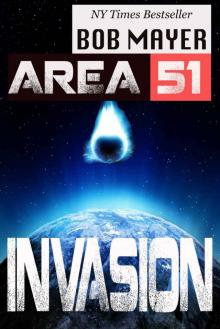 Invasion
Invasion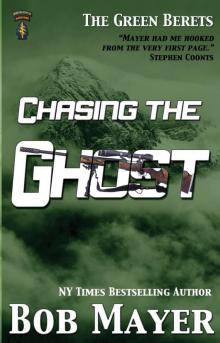 Chasing the Ghost
Chasing the Ghost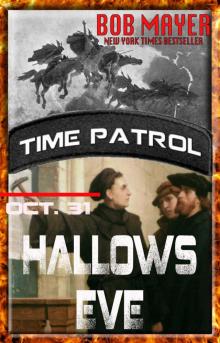 Hallows Eve
Hallows Eve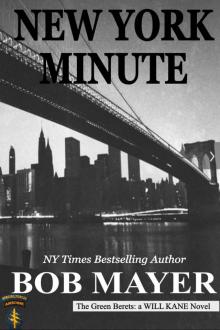 New York Minute
New York Minute Valentines Day
Valentines Day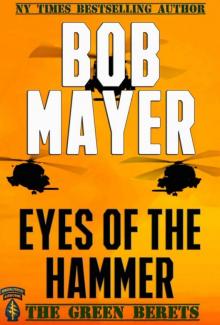 Eyes of the Hammer
Eyes of the Hammer Walk on the Wild Side
Walk on the Wild Side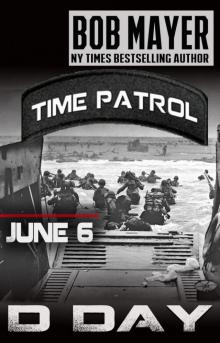 D-Day
D-Day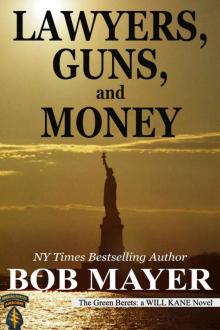 Lawyers, Guns and Money
Lawyers, Guns and Money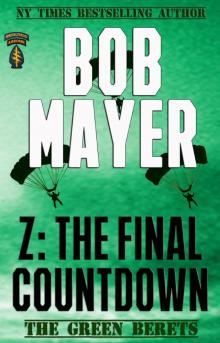 Z: The Final Countdown
Z: The Final Countdown Redemption: Area 51, #10
Redemption: Area 51, #10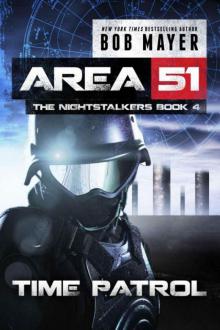 Time Patrol
Time Patrol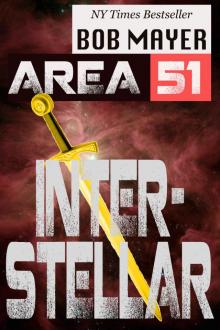 Interstellar
Interstellar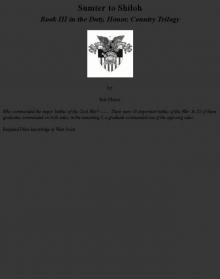 Sumter to Shiloh
Sumter to Shiloh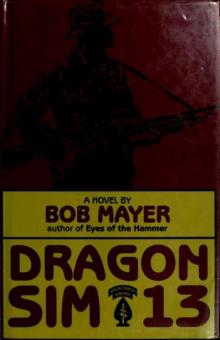 Dragon Sim-13
Dragon Sim-13 The Line
The Line Omega Missile (Shadow Warriors)
Omega Missile (Shadow Warriors)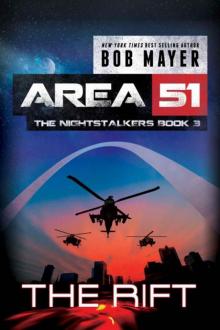 The Rift
The Rift The Jefferson Allegiance
The Jefferson Allegiance Project Aura
Project Aura Synbat
Synbat Ides of March (Time Patrol)
Ides of March (Time Patrol)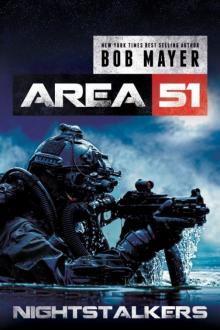 Nightstalkers a5-10
Nightstalkers a5-10 Lost Girls tc-2
Lost Girls tc-2 West Point to Mexico
West Point to Mexico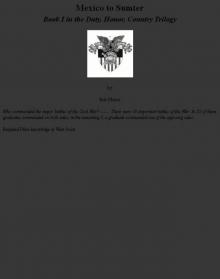 Mexico to Sumter
Mexico to Sumter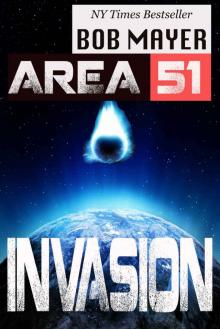 Area 51_Invasion
Area 51_Invasion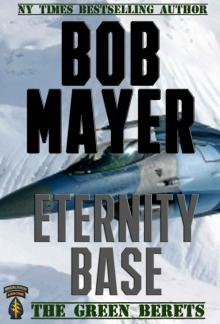 Eternity Base
Eternity Base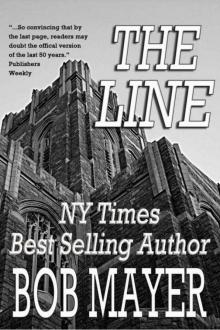 The Line bo-2
The Line bo-2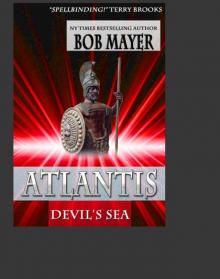 Atlantis Gate
Atlantis Gate I, Judas
I, Judas Area 51_Redemption
Area 51_Redemption Bodyguard of Lies
Bodyguard of Lies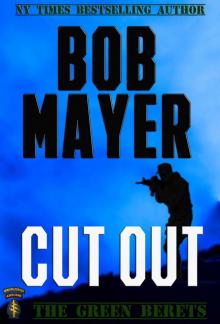 Cut Out
Cut Out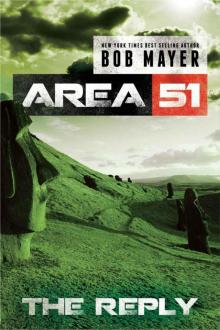 The Reply (Area 51 Series Book 2)
The Reply (Area 51 Series Book 2)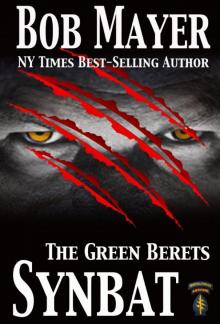 Synbat tgb-3
Synbat tgb-3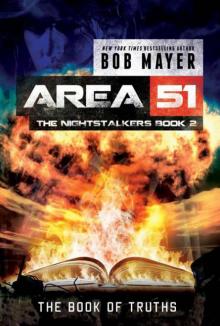 The Book of Truths a5tn-2
The Book of Truths a5tn-2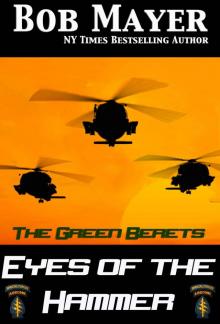 Eyes of the Hammer (The Green Beret Series)
Eyes of the Hammer (The Green Beret Series)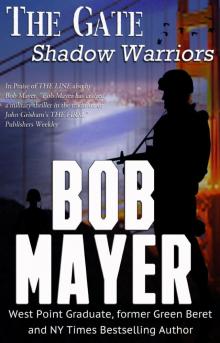 The Gate
The Gate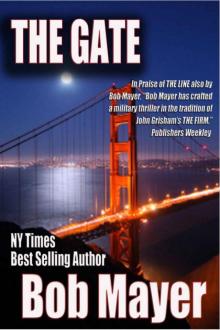 The Gate bo-1
The Gate bo-1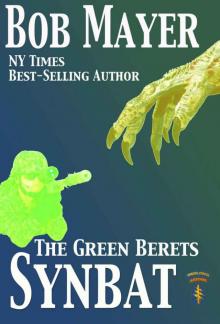 Synbat v5
Synbat v5 Omega Sanction
Omega Sanction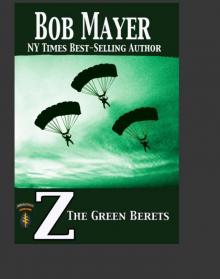 Z
Z Chasing the Son
Chasing the Son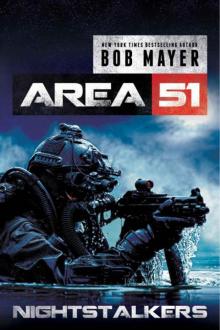 Nightstalkers
Nightstalkers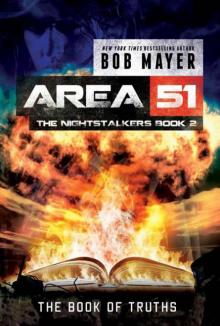 The Book of Truths
The Book of Truths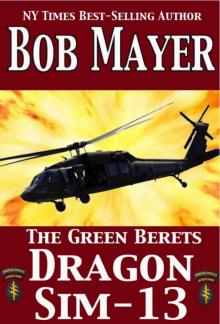 Dragon Sim-13 tgb-2
Dragon Sim-13 tgb-2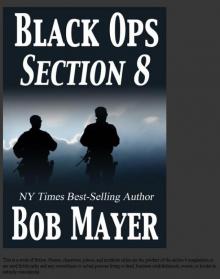 Section 8
Section 8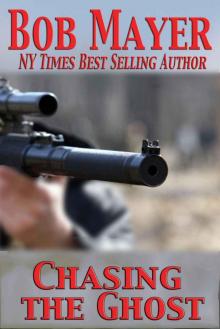 Chasing the Ghost v5
Chasing the Ghost v5 Psychic Warrior
Psychic Warrior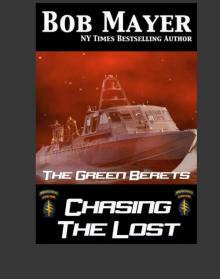 Chasing the Lost
Chasing the Lost The Kennedy Endeavor (Presidential Series Book 2)
The Kennedy Endeavor (Presidential Series Book 2)